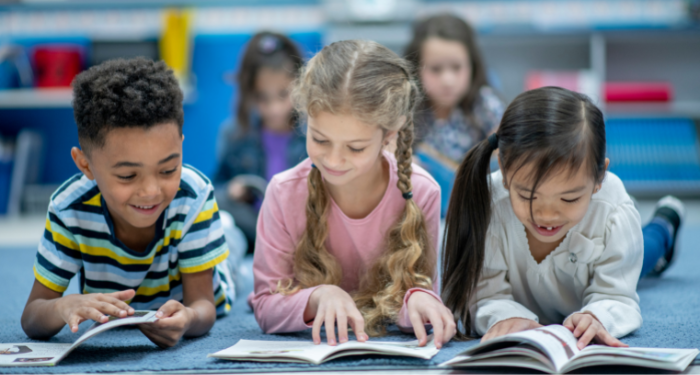This content contains affiliate links. When you buy through these links, we may earn an affiliate commission.
Children’s books fall into six main categories based on age groups and format: board books (ages 0-3), picture books (3-8), readers (4-8), chapter books (6-9), middle grade (8-12), and young adult (12-18). Age groups can be flexible to a degree, but broadly speaking, this is how publishers label children’s book categories. When young readers and caregivers walk into a bookstore or shop online, these are likely how books will be labeled in addition to genres—fantasy, mystery, biography, etc.—when needed. You’re not going to find The Very Hungry Caterpillar by Eric Carle in the middle grade section, or The Hate U Give by Angie Thomas in board books, of course. That might seem obvious, but determining which type of book is best for the kids in your life can get tricky. Is The Hate U Give appropriate for an eight-year-old? What even is a chapter book, and what do the levels mean to readers? I’ve fielded many questions about children’s book categories in my years working as a bookseller and children’s book reviewer, and better understanding them can be so handy for finding the perfect book for the kids in your life.
Why are children’s book categories needed? What do they mean exactly? And how can they be helpful to young readers? Here’s your guide to understanding children’s book categories and age groupings, with examples.
Why Do Children’s Book Categories Matter?
Children have different developmental needs depending on their age and personality. One-year-olds eat more books than they read, which is why the sturdy board book material is so important. (They will still gnaw on them until the edges are riddled with bite marks). Kids in kindergarten are acquiring early reading skills. Teenagers are often exploring sexuality and what it means to be an active community member.
Let me tell you a story of my own mistake ignoring categories. When my daughter was six years old, I gave her a book in the middle grade Warriors series, since she loves cats so much and had been reading some middle grade on her own. What I didn’t realize is how many cats die in that book. It’s quite a violent series, unlike her beloved picture books and chapter books. She had sobbing nightmares for weeks.
Lesson learned! The chapter book category was much more her jam (Bad Kitty to the rescue), and I started reading the middle grade books first before handing them off to her. She wasn’t yet developmentally ready for the darker themes sometimes present in middle grade.
Children’s Book Categories, Explained
Board Books, Ages 0-3
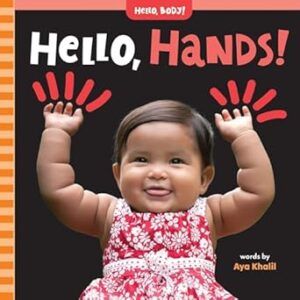

Board books are made of sturdy, ultra-thick paperboard to make it harder for little fingers to tear pages. They’re typically 12-24 pages long, with fewer than 300 words, and often much less than that. Often, these are made in-house at publishing companies. There are different types of board books geared toward different developmental stages within the 0-3 age range, like high contrast and black-and-white board books, photographic board books, concept books, nursery rhymes, rhythmic, interactive, touch-and-feel, and more. It can be a very diverse category of books.
Board book examples: Baby Sees Colors! by Akio Kashiwara, the Hello, Body! series by Aya Khalil, 123 Cats by Lesléa Newman and Isabella Kung, the Teeny Tiendas series by Lourdes Heuer and Zara González Hoang, The Mommies on the Bus by Hannah Eliot and Airin O’Callaghan.
Picture Books, Ages 3-8
Picture books are, perhaps, the most varied category. They can explore refugee experiences (To the Other Side by Erika Meza), tell silly, imaginative stories (Ahoy! by Sophie Blackall), show how important friends are (Sister Friend by Jamilah Thompkins-Bigelow and Shahrzad Maydani), explore the real lives of fascinating people (Jovita Wore Pants by Aida Salazar and Molly Mendoza), and so much more.
Picture books can be hardcover or paperback, typically rectangular in shape (either horizontally or vertically), and are around 32 pages long with between 200 and 600 words, though there are many exceptions to those numbers. Words are accompanied by illustrations on every page. This category is for when kids have longer attention spans and the ability to listen to stories, but they’re not ready for longer stories with multiple characters and side plots yet. The illustrations are as integral to the story as the words are. Think Where the Wild Things Are by Maurice Sendak.
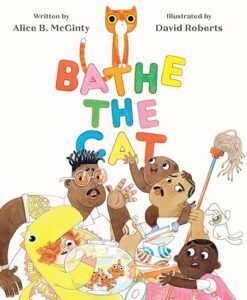

Picture books for younger readers usually have smaller word counts and are simpler in terms of story and character, while picture books for older readers can be longer and have more complex stories. While the sweet spot for picture books tends to be 4-6, for the last few years, I’ve seen a trend of picture books for middle grade readers, ages 8-12—often nonfiction, but not always.
Picture book examples: My Daddy Is a Cowboy by Stephanie Seales and C. G. Esperanza, Bookie & Cookie by Blanca Gómez, Home in a Lunchbox by Cherry Mo, Love, Violet by Charlotte Sullivan Wild and Charlene Chua, Bathe the Cat by Alice B. McGinty and David Roberts, Fighting With Love: The Legacy of John Lewis by Lesa Cline-Ransome and James E. Ransome.
Readers, Ages 4-8
Readers, sometimes called easy readers or leveled readers, help kids decode words and sentences and learn how to read. With around one to two thousand words, much less for very early readers, these are for kids who are beginning to read by themself, a bridge between picture books and the more dense chapter books. They’re often smaller in shape and more closely resemble the traditional size of a book. While still illustration-heavy, there’s a greater emphasis on text, with large text and spaces between lines to help children use their fingers to follow along with the words and make the words and sentences easier to read.
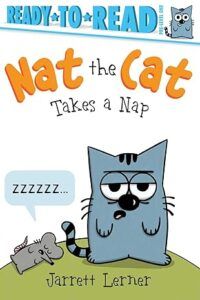

Early leveled readers often rhyme to help children learn the sounds of different letters. Later ones can delve into nonfiction topics and include chapters. Kids will often start reading these at school in kindergarten and first grade, but many are geared toward preschool kids, too. Most leveled readers give an age range on the back. You can also flip through books to see if you think your child is ready for them.
Reader examples: Ling and Ting by Grace Lin, Nat the Cat Takes a Nap by Jarrett Lerner, Ty’s Travels by Kelly Starling Lyons and Niña Mata, The Cookie Fiasco by Dan Santat, Gigi and Ojiji by Melissa Iwai, Dirt and Bugsy: Bug Catchers by Megan Litwin and Shauna Lynn Panczyszyn, Worm and Caterpillar Are Friends by Kaz Windness.
Chapter Books, Ages 6-9
Chapter books have a lot more text than readers (about 5,000-35,000 words long) and much fewer illustrations, often just one or two per chapter. They are full-length novels or nonfiction that don’t have quite the complexity of middle grade, but still offer more depth for transitional readers to sink their teeth into. The chapters are shorter than middle grade, and often the sentence lines are spaced a bit farther apart, and the text can be a bit larger.
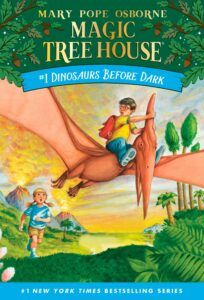

Kids this age love following the same character through multiple books, so these are often large series, like Junie B. Jones. I often see people mistake middle grade for chapter books, but the differences are important because they help readers gradually move to more complex narratives, and helps them flex their reading muscles from going to reading a book in a single sitting to reading over a few sittings.
Chapter book examples: Owl Diaries by Rebecca Elliott, Mindy Kim by Lyla Lee, Miles Lewis by Kelly Starling Lyons, Mercy Watson by Kate DiCamillo, The Princess in Black by Shannon Hale, Magic Tree House by Mary Pope Osborne.
Middle Grade, Ages 8-12
Middle grade books have complex plots that include subplots, more character development and backstory, and can have darker themes. Illustrations are few and far between. They can be anywhere from 30,000-80,000 words. Themes of first crushes, friend drama, balancing home and school problems, solving mysteries as a team, and independence from family can all be present, among many other diverse topics.
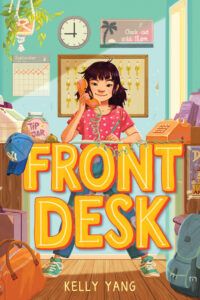

Tweens deal with so much, and they’re beginning to feel a lot of complicated emotions and feelings (thanks, hormones) that are depicted in the books they read, whatever the genre. While violence and romance can be portrayed in middle grade, it typically doesn’t get too graphic. These books might span a year in a child’s life, but typically they don’t go any longer.
Examples: Buffalo Dreamer by Violet Duncan, Kareem Between by Shifa Saltagi Safadi, Breadcrumbs by Anne Ursu, Ellen Outside the Lines by A.J. Sass, Front Desk by Kelly Yang, The Vanderbeekers of 141st Street by Karina Yan Glaser, Amari and the Night Brothers by B.B. Alston.
Young Adult, Ages 12-18
While young adult and middle grade both explore complex themes, things get even more complicated in young adult books, and these books often have intense character development. Mirroring the more complicated storylines and emotions, word counts can be anywhere from 50,000-120,000 words.
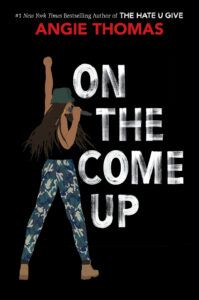

Young adult books tackle challenges teenagers face, like their place in the world and their community, their new-found sexuality, personal identity, and so much more. Lots of relationships will be explored: parental, friendships, enemies, partners. Everything feels really big in a young adult novel, because that’s how being a teenager feels. I sometimes see adult readers leave one-star reviews on Goodreads for young adult novels that feel “immature” or that have teen characters who make bad decisions. Please remember that these books are not written for adults. Adults can still enjoy them, of course (I certainly do), but should still remember the audience.
Examples: Internment by Samira Ahmed, A Suffragist’s Guide to the Antarctic by Yi Shun Lai, Breathe and Count Back from Ten by Natalia Sylvester, We Set the Dark on Fire by Tehlor Kay Mejia, When the Moon Was Ours by Anna-Marie McLemore, On the Come Up by Angie Thomas.
Of course it’s absolutely fine for kids to read outside of age groups and categories! Categories serve a function in letting readers know what to expect from a book in terms of vocabulary, themes, and readability. If a kid is struggling to read middle grade, maybe they need an engaging chapter book instead. If they’re getting bored easily with middle grade, it might be time to step up to young adult. The categories are flexible, and a lot of fun to explore.

